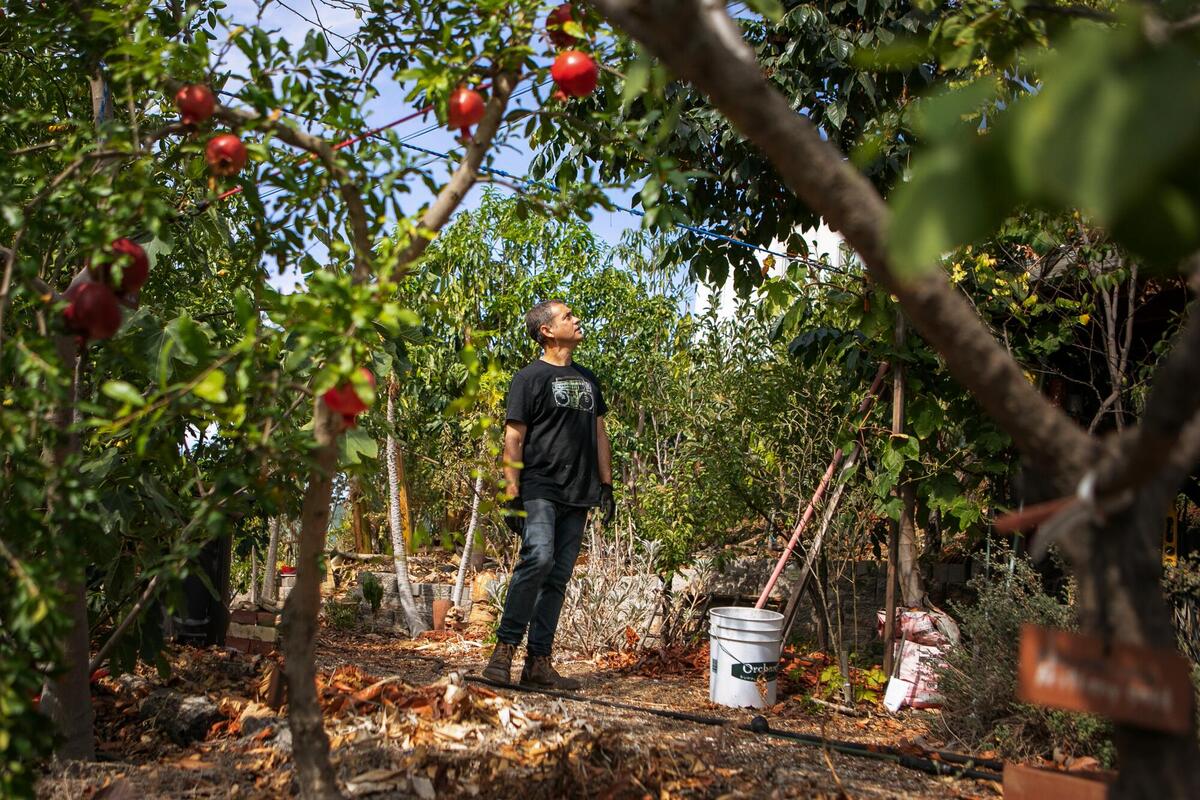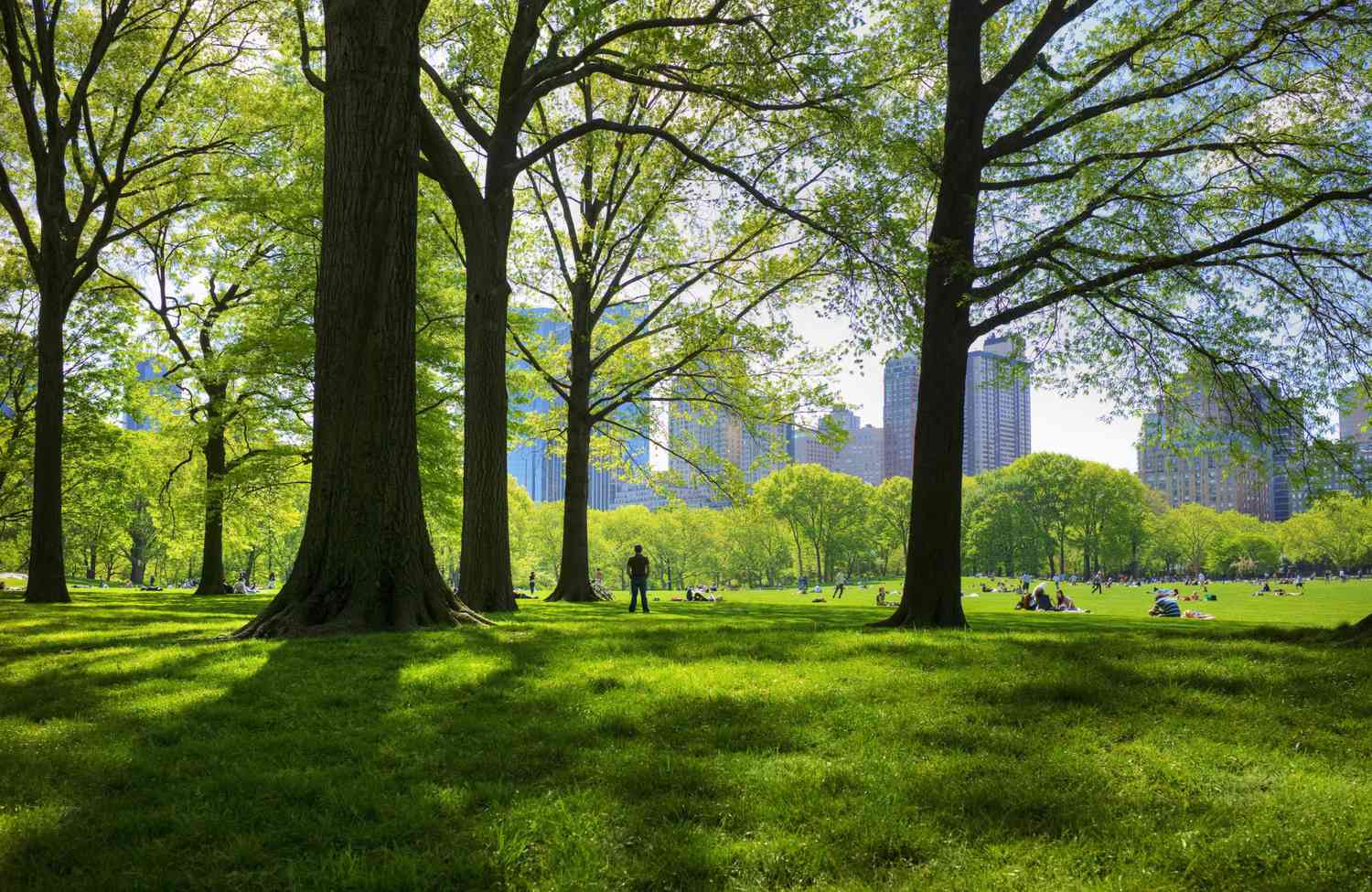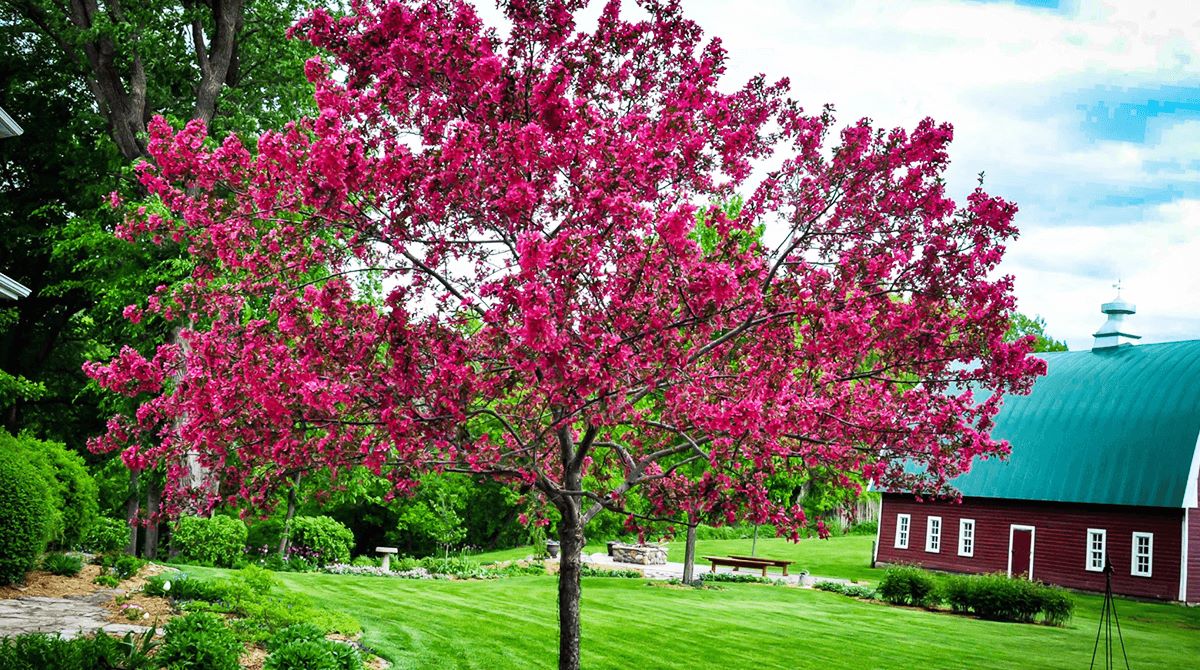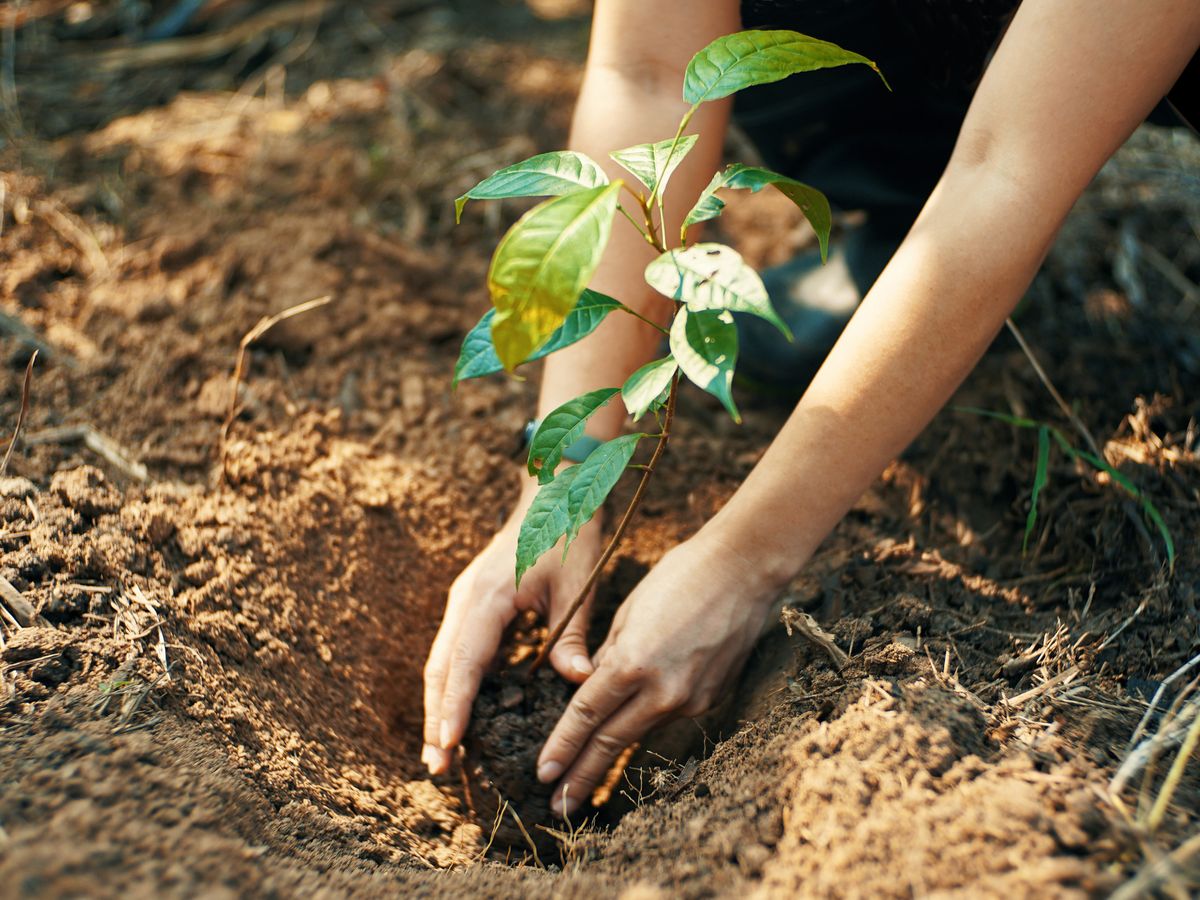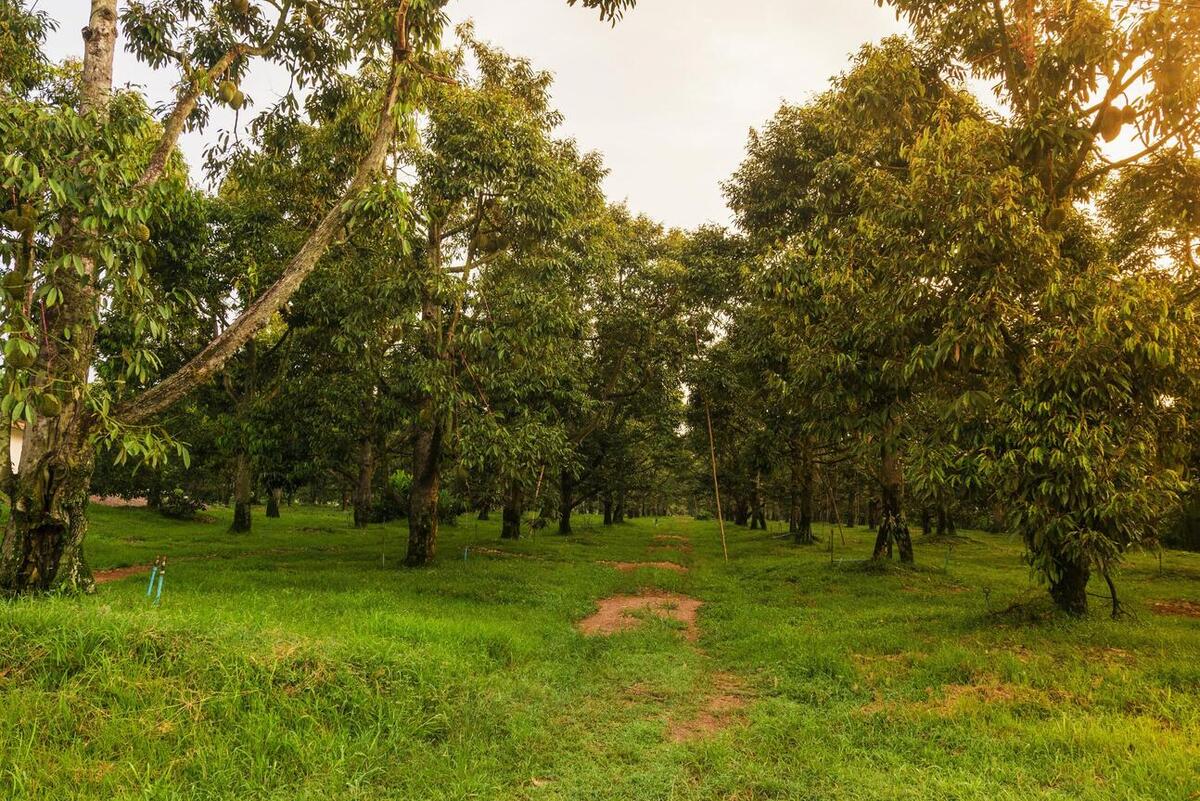Home>Gardening News and Trends>Latest News>How Many Trees To Build A House


Latest News
How Many Trees To Build A House
Modified: January 22, 2024
Discover the latest news on how many trees are required to build a house and gain insights into sustainable construction practices. Stay informed with the latest updates in the industry.
(Many of the links in this article redirect to a specific reviewed product. Your purchase of these products through affiliate links helps to generate commission for Chicagolandgardening.com, at no extra cost. Learn more)
Table of Contents
Introduction
Building houses is a fundamental part of human civilization and has been practiced for thousands of years. However, the environmental impact of traditional house construction has become a significant concern in recent times. The excessive use of natural resources, including trees, has led to deforestation and biodiversity loss, contributing to climate change. As a result, there is a growing need to explore sustainable alternatives that minimize the ecological footprint of construction.
In this article, we will delve into the role of trees in house construction and how their excessive usage can negatively impact the environment. We will also discuss the various types of trees used in construction and the quantity required for different types of houses. Additionally, we will explore the factors that influence the number of trees needed and highlight sustainable alternatives to traditional house construction.
By understanding the environmental implications and exploring alternative practices, we can work towards mitigating the ecological damage caused by house construction. It is crucial to strike a balance between meeting our housing needs and preserving our natural resources to create a sustainable future.
Environmental Impact of Building Houses
The construction of houses has a significant impact on the environment. Traditional methods of house construction heavily rely on the use of natural resources, including trees, which contributes to deforestation and habitat destruction. This, in turn, leads to a loss of biodiversity and exacerbates climate change. Let’s explore some of the key environmental impacts of building houses:
Deforestation: Trees are often harvested to obtain timber for various construction purposes, including framing, flooring, and furniture. Large-scale deforestation disrupts ecosystems and destroys habitats for countless plant and animal species. It also reduces the Earth’s capacity to absorb carbon dioxide, a greenhouse gas that contributes to global warming.
Loss of Biodiversity: Forests are home to a diverse range of flora and fauna. When these ecosystems are destroyed, numerous species lose their natural habitat and may face extinction. This loss of biodiversity has severe consequences for ecological balance and disrupts the intricate relationships between different organisms.
Soil Erosion and Water Pollution: Construction activities often involve the removal of topsoil, which is essential for plant growth and soil stability. This can lead to increased soil erosion, impacting nearby water bodies. Additionally, construction sites may generate pollutants such as debris, sediment, and chemicals, which can contaminate rivers, streams, and groundwater.
Energy Consumption and Greenhouse Gas Emissions: The production and transportation of construction materials, along with the energy required for building houses, contribute to greenhouse gas emissions. The burning of fossil fuels, such as coal and oil, releases carbon dioxide into the atmosphere, contributing to global warming and climate change.
Considering these environmental impacts, it is crucial to adopt sustainable practices in house construction to minimize the damage to our planet. By doing so, we can ensure a more sustainable future for generations to come.
The Role of Trees in Construction
Trees play a crucial role in the construction industry, providing a renewable and versatile resource for various stages of building houses. From structural components to interior finishes, trees are utilized in a myriad of ways. Let’s explore the key areas where trees are commonly used in construction:
Structural Support: One of the primary roles of trees in construction is providing structural support. Timber, derived from trees, is used for beams, columns, and framing, forming the skeleton of a house. Wood has excellent strength-to-weight ratio properties, making it a reliable and sustainable option for structural components.
Interior Finishes: Trees also contribute to the aesthetic appeal and functionality of a house through interior finishes. Hardwood flooring, doors, window frames, and cabinetry are all examples of how trees are incorporated into the design and functionality of the interior spaces. These elements provide warmth, beauty, and durability to a house.
Insulation and Soundproofing: Wood is a natural insulator, providing thermal comfort inside homes. Wooden walls, floors, and roofs help regulate temperature and reduce energy consumption for heating and cooling. Additionally, trees absorb sound waves, making wood a soundproofing material, enhancing privacy and reducing noise pollution.
Sustainability and Carbon Sequestration: Trees are an inherently sustainable construction material. When responsibly sourced and managed, the use of timber in construction helps promote reforestation efforts and reduces carbon emissions. Trees absorb carbon dioxide during their growth, acting as a natural carbon sink and mitigating the impacts of climate change.
It is important to note that the use of trees in construction should be balanced and sustainable. Reforestation and proper forest management practices are essential for replenishing the resources used and ensuring a continuous supply of wood for future generations.
Incorporating trees into construction not only provides functional and aesthetic benefits but also contributes to sustainable building practices that minimize the ecological footprint of the construction industry. By utilizing trees responsibly, we can create homes that blend harmoniously with the environment.
Types of Trees Used in House Construction
Various types of trees are utilized in house construction, each with unique properties that make them suitable for specific purposes. Here are some commonly used trees in the construction industry:
Softwood: Softwood trees, such as pine, cedar, and spruce, are widely used in construction. They possess excellent strength-to-weight ratio, making them ideal for structural components like beams, studs, and trusses. Softwood is also commonly used for exterior siding and decking due to its natural resistance to decay and insects.
Hardwood: Hardwood trees, including oak, maple, and mahogany, are favored for their durability and aesthetic appeal. Hardwood is commonly used for flooring, cabinetry, furniture, and decorative finishes. It provides a luxurious and long-lasting finish to interior spaces and adds value to the overall design of the house.
Bamboo: Although technically not a tree, bamboo is a fast-growing grass that is increasingly being used as a sustainable alternative to traditional wood. Its strength, flexibility, and rapid growth make it an attractive option for various construction purposes, such as flooring, wall paneling, and even structural elements.
Cork: Cork is derived from the bark of the cork oak tree. It is a versatile and eco-friendly material that is utilized in construction for insulation, flooring, and wall coverings. Cork has natural sound-absorbing properties and excellent thermal insulation, making it a sustainable choice for creating comfortable and energy-efficient homes.
Redwood and Cedar: Redwood and cedar are highly valued for their natural beauty, insect resistance, and durability. They are commonly used for exterior siding, decking, and outdoor structures. These durable softwoods can withstand harsh weather conditions and require minimal maintenance, making them popular choices for outdoor applications.
It is important to note that the availability of tree species may vary depending on the geographical location and sustainable forest management practices. Responsible sourcing and proper certification of wood ensure that the trees used in construction are harvested sustainably, minimizing environmental impact.
By utilizing different types of trees in house construction, we can create homes that are both structurally sound and visually appealing, while also aligning with sustainability principles.
Quantity of Trees Required for Different Types of Houses
The number of trees required for building a house varies depending on factors such as the size, design, materials used, and construction methods. While it is challenging to provide an exact number, we can provide a general overview of the quantity of trees required for different types of houses:
Small-Sized House: A small-sized house, typically consisting of one or two bedrooms, requires fewer trees compared to larger houses. On average, it may require around 10 to 20 mature trees, considering the need for structural components, flooring, and interior finishes.
Medium-Sized House: A medium-sized house, with three to four bedrooms, will require a greater quantity of trees. This may range from approximately 20 to 40 mature trees, taking into account the additional structural components, flooring, cabinetry, doors, and other interior finishes.
Large-Sized House: A large-sized house, consisting of five or more bedrooms, will necessitate a significant number of trees. The quantity can vary greatly, but it could range from approximately 40 to 100 mature trees or more. The larger size of the house requires more timber for structural support, flooring, doors, windows, and extensive interior finishes.
It is important to note that these numbers are estimates and can vary depending on the specific design, materials used, and construction practices. Sustainable construction practices aim to reduce the overall quantity of resources used, including trees, by optimizing design efficiency, utilizing recycled and sustainable materials, and implementing advanced construction techniques.
Moreover, advancements in technology and the growing trend of sustainable building practices have paved the way for innovative alternatives to traditional house construction. These alternatives, such as prefabricated modular homes, earth homes, and sustainable building materials like recycled wood, bamboo, and engineered lumber, reduce the reliance on virgin timber and minimize the number of trees required.
By adopting sustainable construction practices and exploring alternative materials, we can reduce the quantity of trees needed for house construction, ensuring the preservation of our forests and minimizing the environmental impact of the construction industry.
Factors Affecting the Number of Trees Needed
The number of trees needed for house construction is influenced by various factors that contribute to the overall design, materials used, and construction methods. Understanding these factors can help us optimize the use of trees and minimize their quantity. Here are some key factors that affect the number of trees required:
House Size and Design: The size and design of the house have a significant impact on the number of trees needed. Larger houses with multiple levels and complex designs require more structural components, interior finishes, and exterior cladding, resulting in a higher demand for trees.
Construction Materials: The choice of construction materials can greatly influence the number of trees required. Using timber as the primary construction material will naturally require more trees. However, alternative materials such as recycled wood, engineered lumber, and sustainable composites can help reduce the number of trees needed while still providing structural integrity.
Efficient Design and Layout: An efficiently designed house maximizes the use of space, minimizing the overall footprint and subsequently reducing the number of trees needed. By optimizing the layout and carefully planning the floor plan, it is possible to achieve the desired functionality while minimizing the environmental impact.
Construction Techniques: The construction techniques employed also impact the number of trees required. Innovative construction methods, such as prefabrication and modular construction, can reduce the quantity of materials needed, including trees. These techniques leverage offsite fabrication and minimize waste, resulting in a smaller ecological footprint.
Sustainable Building Practices: Embracing sustainable building practices, such as energy-efficient design, utilizing renewable energy sources, and implementing green building certifications, can contribute to minimizing the impact on forests and the need for excessive tree harvesting. Additionally, incorporating sustainable materials, such as bamboo or recycled wood, can further reduce the reliance on traditional timber.
Local Availability and Responsible Sourcing: The availability of tree species in a specific region can affect the number of trees required. Utilizing locally sourced materials reduces transportation costs and ensures a more sustainable supply chain. Moreover, choosing responsibly sourced wood from certified forests promotes sustainable forest management and minimizes the negative environmental impact.
It is essential to consider these factors during the planning and design stages of house construction. By incorporating sustainable practices, using alternative construction materials, and optimizing design and construction techniques, we can significantly reduce the number of trees needed while still creating beautiful and functional homes.
Sustainable Alternatives to Traditional House Construction
As awareness of the environmental impact of house construction grows, there is an increasing demand for sustainable alternatives to traditional building methods. These alternatives aim to reduce the reliance on natural resources such as trees and minimize the ecological footprint of construction. Here are some sustainable alternatives to consider:
1. Green Building Materials: Utilizing sustainable and eco-friendly building materials can significantly reduce the need for trees in construction. Examples include recycled materials such as reclaimed wood, recycled steel, and recycled concrete. Additionally, using materials like bamboo, which is fast-growing and renewable, helps maintain forest ecosystems.
2. Modular and Prefabricated Construction: Prefabricated construction involves manufacturing components off-site and assembling them on-site. This method reduces construction waste and optimizes material usage. Modular construction, a type of prefabricated construction, allows for efficient resource allocation while minimizing the amount of timber required.
3. Earth Homes: Earth homes, also known as rammed earth or cob houses, use natural materials such as clay, straw, and earth for construction. These sustainable building methods minimize the need for timber, provide excellent thermal insulation, and have a lower carbon footprint compared to traditional construction.
4. Sustainable Design and Energy Efficiency: Incorporating sustainable design principles can significantly reduce the environmental impact of a house. Passive solar design, proper insulation, and energy-efficient appliances help decrease the need for excessive heating and cooling, reducing energy consumption and carbon emissions associated with traditional construction.
5. Green Roofs and Living Walls: Green roofs and living walls utilize vegetation to cover rooftops and vertical surfaces, respectively. These features provide insulation, reduce stormwater runoff, and promote biodiversity. Incorporating green roofs and living walls helps mitigate the environmental impact of construction while enhancing the beauty and functionality of the house.
6. Zero-Energy Homes: Zero-energy homes aim to produce as much energy as they consume. Through the use of renewable energy systems like solar panels, wind turbines, and geothermal heating, these homes can eliminate or greatly reduce the carbon emissions associated with energy consumption.
By adopting these sustainable alternatives, we can create houses that are not only environmentally friendly but also energy-efficient and cost-effective in the long run. It is crucial for the construction industry to embrace these practices and collectively work towards a more sustainable future.
Conclusion
The construction of houses has a significant environmental impact, particularly in terms of tree consumption and deforestation. However, by understanding the implications and exploring sustainable alternatives, we can create a more sustainable future for house construction.
We have explored the essential role that trees play in construction, from providing structural support to enhancing the aesthetic appeal of a house. However, their excessive use can contribute to deforestation, loss of biodiversity, soil erosion, and increased greenhouse gas emissions.
Factors such as house size, design, construction materials, efficient design, and sustainable building practices all influence the number of trees needed for construction. By incorporating sustainable alternatives like green building materials, modular construction, earth homes, and energy-efficient design, we can reduce the reliance on traditional timber and minimize the ecological footprint of construction.
It is crucial to embrace sustainable practices in house construction, striving for a balance between meeting our housing needs and preserving our natural resources. Responsible sourcing, proper forest management, and exploring innovative materials and construction methods can contribute to a more sustainable approach.
As individuals, homeowners, and industry professionals, we can all make a difference by making conscious choices and advocating for sustainable practices in the construction industry. By doing so, we can create homes that not only provide comfort and functionality but also align with our commitment to preserving the environment for future generations.
